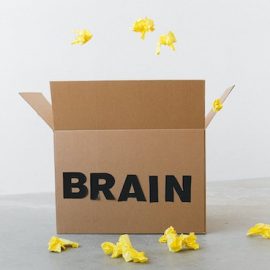

This article is an excerpt from the Shortform book guide to "Psycho-Cybernetics" by Maxwell Maltz. Shortform has the world's best summaries and analyses of books you should be reading.
Like this article? Sign up for a free trial here .
Why do we often act in ways that thwart progress towards our goals? What do people who act in accordance with their goals do differently?
According to Maxwell Maltz, the author of Psycho-Cybernetics, the main reason people self-sabotage themselves by engaging in behaviors that directly contradict their goals is that their goals don’t align with their internal programming. This incongruence, he argues, is down to their self-image.
In this article, we’ll explore the role of self-image in goal-oriented behavior.
Negative Self-Image: Why We Self-Sabotage
According to Maltz, all we need to do to achieve success and happiness is to decide on an appropriate goal and let our brain work like a machine that’s been directed to work on a specific action—it will automatically direct our thoughts and actions towards reaching that goal.
Unfortunately, things aren’t that simple: You may decide to achieve a goal, but deep down, your brain may not be programmed to achieve that goal. Maltz argues that your conscious goals often differ from your internal programming. For example, your conscious goal may be to make friends (results in success), but your internal programming might lead you to push people away (results in failure). This conflict between your conscious goal and your internal programming leads you to unhappiness and a feeling of failure because you can’t move past your internal programming.
Maltz argues that when your conscious goals differ from your internal programming, you engage in self-defeating behaviors that thwart the goals you’ve set for yourself. You’ll recognize this in instances of self-sabotage. Obvious forms of self-sabotage include procrastination (when you avoid taking action to achieve your goals) and unhealthy habits such as overeating when your goal is to lose weight, or overspending when your goal is to save money.
Why does this incongruence between your conscious goals and your internal programming occur? Maltz argues that it’s down to your self-image. Your self-image defines who you are, how you express yourself, and how you act in any given situation.
For example, consider an experience such as falling over. You could either say to yourself, “I fell over” (a fact that won’t impact your self-image), or you could say to yourself, “I’m a klutz!” (the way you identified with the experience, which will impact your self-image, and the way that you express yourself—for example, you may act overly cautious as a result of this identification).
Your Self-Image Impacts Your Behavior
When it comes to goal-oriented behavior, humans and machines differ in one essential way: humans rely on their self-image to interpret the feedback they receive from their environment. Their interpretation of feedback impacts the way they approach their goals and doesn’t always lead to success.
Maltz argues that the self-image is continually reinforced by what he calls “feedback loops”—how feedback reinforces learned behavior and programming—and draws parallels with how cybernetic machines incorporate feedback to operate successfully.
Machines process feedback so that they can achieve their goal. Once they achieve the goal, they store their successful feedback (memory of successful attempts) and discard their negative feedback (memory of mistakes). Their memory of successful attempts creates a feedback loop that allows them to “learn” quickly and operate efficiently and successfully.
However, unlike a machine, humans rely on their self-images to interpret feedback to their behavior. Your self-image decides whether to release negative feedback so that you operate successfully (behave in a way that results in success), or to remember and reinforce negative feedback so that you operate inefficiently (behave in a way that creates failure). If your self-image decides to focus on negative feedback, this can lead to programming that causes you to reinforce negative patterns of behavior that work against what you want to achieve.
- For example, imagine someone who was bullied as a child and failed to receive support. This person identified with feeling victimized and isolated, and this impacted her self-image. She now finds it difficult to trust others and form close relationships—she expresses this difficulty in various ways, from aloofness to hostility. As a result, her behavior keeps people at a distance. She interprets their distance as proof that others don’t want to connect with her, and she remains acutely aware of how they make her feel (victimized and isolated). She uses this interpretation as proof that she should continue to protect herself from social interactions.
Even though she wants to connect with others (her goal) her self-image causes her to interpret all feedback as negative, stops her from moving towards what she wants, and perpetuates her self-isolation.
Your interpretation of your environment justifies your self-image and how you continue to act—how you continue to act further reinforces your interpretation of your environment, and so on. So, if you want to achieve success and happiness—according to the goals you’ve consciously set for yourself—you need to ensure that your self-image aligns with what you want. This way, you’ll be able to interpret and act on feedback in a way that moves you toward your goals.

———End of Preview———
Like what you just read? Read the rest of the world's best book summary and analysis of Maxwell Maltz's "Psycho-Cybernetics" at Shortform .
Here's what you'll find in our full Psycho-Cybernetics summary :
- How to program your mind in the same way you’d program a machine
- How your self-image and patterns of thinking impact everything you do
- Five methods you can use to improve self-image and create success






